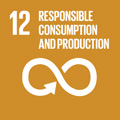- Docente: Alessandro Hill
- Credits: 6
- SSD: MAT/09
- Language: Italian
- Moduli: Alessandro Hill (Modulo 1) Alessandro Hill (Modulo 2)
- Teaching Mode: In-person learning (entirely or partially) (Modulo 1); In-person learning (entirely or partially) (Modulo 2)
- Campus: Cesena
- Corso: First cycle degree programme (L) in Computer Science and Engineering (cod. 8615)
-
from Sep 23, 2024 to Oct 25, 2024
-
from Oct 28, 2024 to Dec 16, 2024
Learning outcomes
At the end of the course, the student knows the main models and algorithms for linear and integer programming and graph theory.
Course contents
1. Mathematical models of optimization problems
Definition of a mathematical model, decision variables, objective function and requirements or constraints. Mathematical modeling techniques.
Examples of mathematical models for real-world applications.
2. Continuous Linear Programming (PLC) and Integer Programming (PLI).
Mathematical models with continuous variables. Geometric resolution. PLC theory and simplex algorithm
Mathematical models with integer variables. Geometric interpretation. Properties of PLI problems. Relaxation techniques. Cutting-plane algorithms (CP). Branch-and-bound method (B&B). Applications of the B&B technique.
3. Elements of graph theory and its main problems.
Main definitions of graph theory. Minimum cost spanning trees (SST). Minimal paths (CM). Network flow problems (FR), maximum flow, minimum cost flow. Linear assignment.
Readings/Bibliography
Lecture notes and slides by teacher available online
Texts for consultation only:
- Matteo Fischetti, Operations Research Lessons, Project Library.
- C. Papadimitriou, K. Steiglitz, Combinatorial Optimization: Algorithms and Complexity, Dover Publications, NY.
- R.K.Ahuja, T.L.Magnanti, J.B.Orlin, "Network flows: theory, algorithms and applications", Prentice Hall.
- M. Gondran, M. Minoux, "Graphs and Algorithms", John Wiley.
- M.S. Bazaraa, J.J. Jarvis, H.D. Sherali, Linear Programming and Network Flows, Wiley.
Teaching methods
Lectures and exercises.
Assessment methods
The learning assessment takes place through a written test, which has the purpose of examining the acquisition of the knowledge required by the program of the course.
Office hours
See the website of Alessandro Hill
SDGs



This teaching activity contributes to the achievement of the Sustainable Development Goals of the UN 2030 Agenda.
